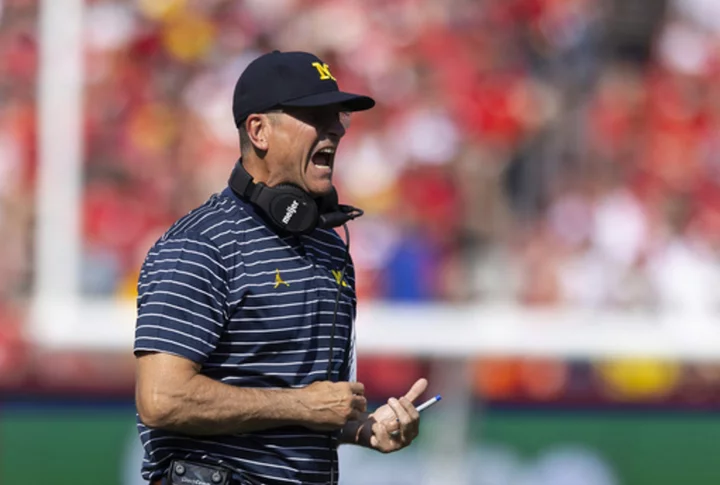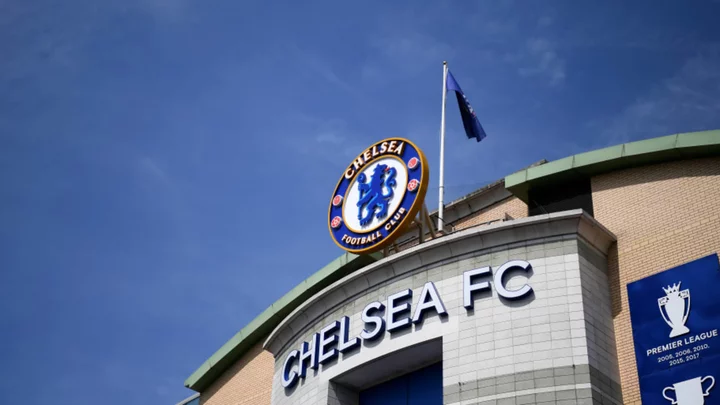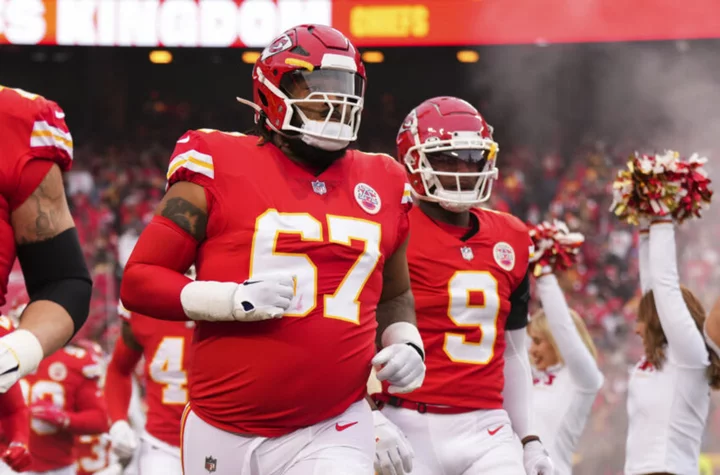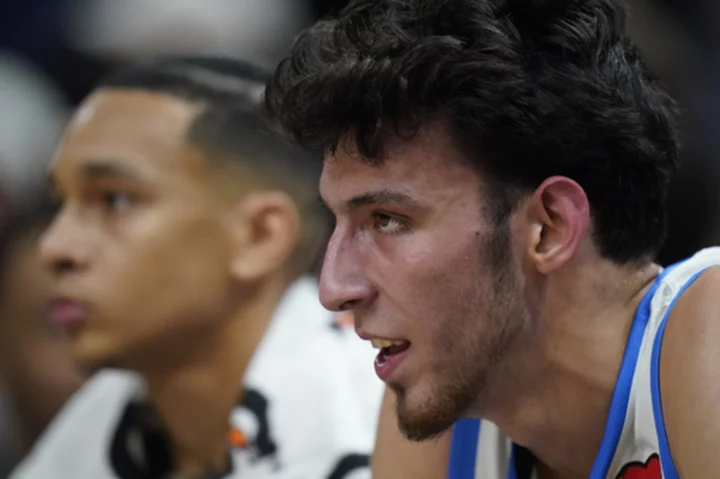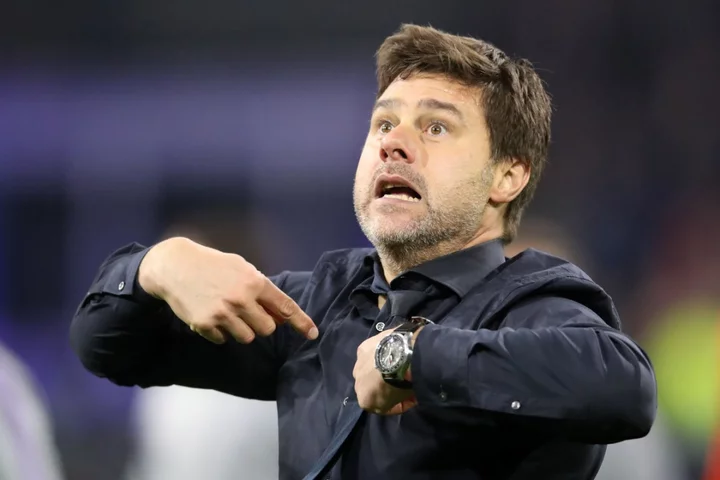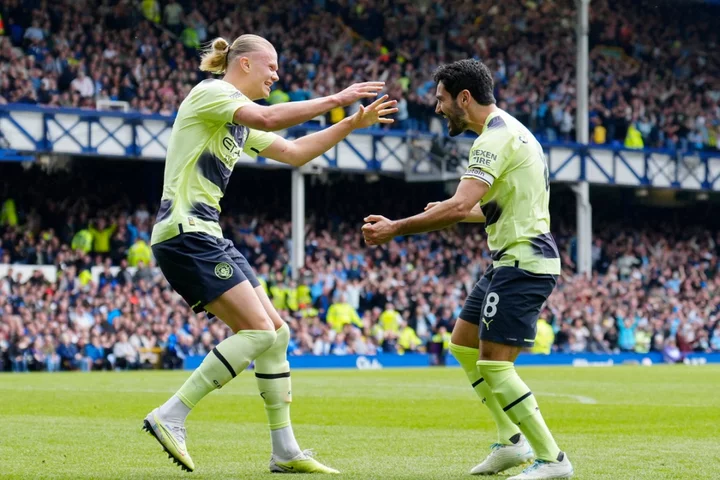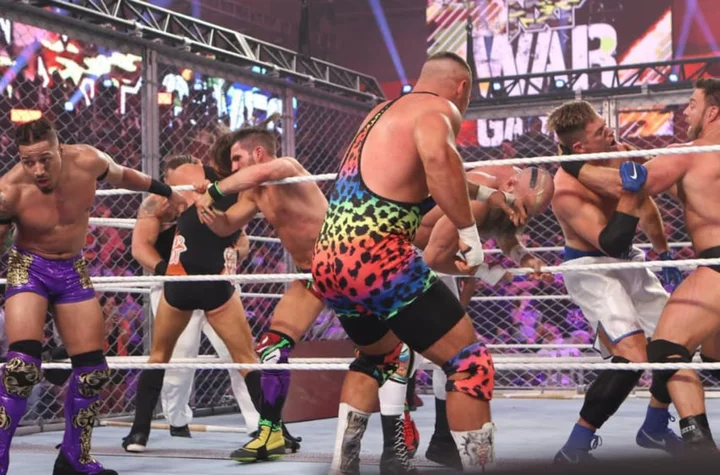The Golden State Warriors made one of the biggest splashes of the offseason. Let's break down Steve Kerr's new-look rotation.
The Golden State Warriors were the No. 6 seed in the Western Conference last season. It's hard to overstate the disappointment relative to expectations. They were the reigning champs with one of the most accomplished cores in NBA history. And yet, the No. 6 seed.
Stephen Curry and company managed to save face a little bit with a first-round "upset" of Sacramento, but the Warriors were swiftly dispatched by the No. 7 seed Lakers in the second round of the playoffs. It never really felt like the Warriors were equipped for a title run, which is concerning when one considers the amount of money being spent on the roster.
Several storms crossed Golden State's path last season, starting with Draymond Green's decision to punch Jordan Poole in a preseason practice. That set the tone for a rocky campaign, one highlighted by discontinuity unlike anything we've ever seen under Steve Kerr. The Warriors' typically unstoppable offense felt stilted and off-balance, and a wave of injuries and absences didn't help.
Now the Warriors are looking to turn over a new leaf and return to the hallowed halls of contention. With Green freshly re-signed on a $100 million contract and Poole subsequently given the boot, Golden State is hoping to leave last season in the past.
Here's what the rotation should look like.
Golden State Warriors starting point guard: Stephen Curry
There's no surprise here. Chris Paul's arrival could complicate the specific "point guard" designation for Stephen Curry, but the idea of Golden State starting games super small with a Paul-Curry-Thompson backcourt does not feel sustainable. Even if that's how Steve Kerr starts the season, one has to imagine Paul will get shuffled to the sixth man role sooner than later.
Now 35 years old, Curry probably doesn't get the credit he deserves for aging so gracefully. He's on the short list of players with a legitimate claim for the title of 'Best NBA Player,' even if Nikola Jokic probably has sole ownership of that title for the moment. He's one of one — the single most headache-inducing defensive assignment imaginable and the engine behind the most unstoppable offense in NBA history.
Curry can bend defenses with his shooting and movement, but he's also a competent table-setter who frequently dips inside and finishes around the rim better than most players his size. On defense, he's far from the unmitigated disaster his critics would have you believe. In fact, he's probably on the higher end of the spectrum when it comes to 6-foot-3 guards.
He's on track for another All-NBA season.
Primary backup point guard: Chris Paul
Chris Paul should get plenty of minutes alongside Curry and the expectation is that he will close a lot of games, even if he doesn't start. The Warriors have always been top of the line when it comes to small ball, but saving the Paul-with-starters lineup for specific late-game scenarios feels like the smart move.
The Warriors have never really had a pick-and-roll playmaker of Paul's caliber during Steve Kerr's tenure with the team. He figures to add an interesting new dynamic to the halfcourt offense, and one has to imagine the preternaturally intelligent Paul will take quickly to Kerr's complex system.
Others who could receive minutes at point guard: Draymond Green, Cory Joseph
Golden State Warriors starting shooting guard: Klay Thompson
Last season was Klay Thompon's first full season since 2018-19. The all-time great shooter looked the part, averaging 21.9 points and burying 41.2 percent of his career-high 10.6 three-point attempts per game. Not too shabby for a player with Thompson's recent injury history.
That said, Thompson did show signs of wear and tear — primarily on the defensive end, where his days as an elite wing stopper felt like a distant memory. That's an underrated factor in the debate over Chris Paul's rotation spot. It's hard to justify starting a 38-year-old defensive liability and pulling your only source of rim protection from the main five when you already have a smaller wing who's struggling to stay in front of his man. Paul and Thompson starting games and playing extended stretches together might be untenable in 2023.
Primary backup shooting guard: Gary Payton II
The Warriors traded for GPII last season, reuniting the spunky do-it-all guard with Golden State's second unit. Payton is a bullish defender with the strength to guard much bigger than his listed height of 6-foot-4, which makes him a natural fit in Golden State's switch-heavy scheme.
On the offensive end, he's a great connector of dots, frequently making the unselfish play and moving without the ball. He finishes well on cuts to the rim and he's enough of a shooter to stay on the floor once the postseason arrives.
Others who could receive minutes at shooting guard: Brandin Podziemski
The Warriors selected Brandin Podziemski out of Santa Clara with the No. 19 overall pick in June's NBA Draft. Odds are the rookie won't see the floor much for a contending team, but Podziemski is uniquely NBA-ready with his team-aware defense, effortless 3-point shot, and high basketball I.Q.
He's one of the best passers from the 2023 draft class and he feels like a natural fit in Kerr's offense. Podziemski will also get to learn from the best in the business at his position. Who better for a rookie combo guard to apprentice under than Curry, Thompson, and Paul?
Golden State Warriors starting small forward: Andrew Wiggins
Andrew Wiggins made his first All-Star team in 2021. He was limited to only 37 appearances last season due to personal issues off the court, but he was effective when available. The Warriors quickly assimilated him back into the starting five once the playoffs arrived and he should continue to operate with the main unit next season.
It took a while for the former No. 1 pick to find his footing in the NBA, but Golden State has proven to be the perfect home for Wiggins. Rather than being asked to carry a primary scoring burden, Wiggins is able to focus on shooting 3s and attacking closeouts while committing the majority of his effort to the defensive end. Wiggins has emerged as one of the league's best wing defenders, a shocking development when one considers how poorly he held up on that end in Minnesota.
With Thompson starting to slip on the defensive end, Wiggins' versatility on the ball is even more important. He can guard 1-4 and handle the Warriors' top-priority matchups on any given night. Draymond Green is the Warriors' defensive quarterback, but Wiggins is the sledgehammer used to batter the league's top scorers at the point of attack.
Primary backup small forward: Moses Moody
The Warriors' two-timelines approach has been largely disappointing, but Moses Moody was a productive 3-and-D wing hitting 59.1 percent of his long-range attempts in the playoffs last season. He was 20 years old at the time.
The Arkansas product has a very clear path to minutes in his third NBA season. One could credibly argue that he's the best prospect on the roster, or at least the young player who fits the best. He can defend a couple of positions, his shot is butter, and his athleticism really pops on backdoor cuts or straight-line drives to the rim.
Others who could receive minutes at small forward: Klay Thompson
Golden State Warriors starting power forward: Draymond Green
The Warriors kept Draymond Green for what, frankly, felt like a discount. Only $100 million over four years. That can look like a steep number for a 33-year-old with Green's offensive limitations, but it's dwarfed by the NBA's rising cap ceiling. Plus, the Warriors were going to be in cap hell no matter what happened with Green. Keeping him for well below his max number is a huge victory.
Green has his fair share of detractors, but most of them simply fail to understand his value on the defensive end. He's not a traditional stopper at the point of attack and he won't always handle the toughest one-on-one challenges. What makes Green special is his I.Q. and communication skills. He's the Warriors' defensive quarterback, constantly barking out orders, directing teammates, and never finding himself out of position.
That's not to say Green can't handle business one-on-one. He's more than capable of waging war with bigger bodies in the post or switching onto the perimeter and sliding his feet with smaller ball-handlers.
On the offensive end, Green still supplies ample value as a playmaking hub in the 4-spot. He doesn't score much, but he's always screening, moving, and passing with the intention of setting up teammates. His two-man actions with Curry and Thompson are second nature as this point.
Primary backup power forward: Jonathan Kuminga
There's real doubt about Jonathan Kuminga's future with the Warriors. The No. 7 pick was an afterthought in the playoffs and it's clear Steve Kerr doesn't trust him to be a pivotal part of the rotation. Not yet, at least. With the 20-year-old's first contract negotiations on the horizon, the Warriors have to make a choice: commit to developing Kuminga or trade him for a win-now piece.
Kuminga's talent is beyond doubt. He's still learning how to put all the pieces together, but explosive 6-foot-9 wings who can pounce toward the rim like Kuminga aren't easy to come by. He hit 37 percent of his 3s last season and the Warriors even experimented with him at the 5 for stretches. His versatility and raw athletic power are going to make him a highly sought-after trade piece if Golden State ultimately pulls the plug.
Others who could receive minutes at power forward: Andrew Wiggins
Golden State Warriors starting center: Kevon Looney
Another key reason why Chris Paul will ultimately come off the bench: Kevon Looney is really freakin' good. He's the easiest player to overlook in Golden State's star-studded starting five, but Looney has been a rock-solid presence in the middle for three championship runs now.
The Warriors have become synonymous with small ball, but small ball only works in certain matchups and certain situations — especially with the league's increasing focus on the intersection of skill and size. You still need big rim protectors to wall off the paint and absorb physical matchups, especially in the regular season.
Looney is one of the most bankable drop coverage defenders in the NBA and he's fairly light on his feet when asked to defend in space. He's also straight-up one of the best rebounders in the NBA. He had three games of 20-plus rebounds in the postseason. That is not normal, folks. He's more than the nominal fifth starter — he's an essential part of Golden State's identity.
Primary backup center: Draymond Green
Even with Looney getting the bulk of the center minutes, expect the Warriors to run plenty of small ball with Green at the five. This is a popular closing look for Steve Kerr and that won't change with CP3 in the fold. Even as he advances in age and the NBA moves away from small ball, Green can still anchor a defense.
On the offensive end, Green's screen-setting and connective passing is most effectively weaponized when he's sharing the floor with four shooters. As great as Looney is defensively, he mostly operates in the paint on offense. There are certain complications that arise due to Green's inability to space the floor.
Others who could receive minutes at center: Dario Saric, Trayce Jackson-Davis
Dario Saric was a great under-the-radar pickup for Golden State. He's limited on the defensive end as a mostly ground-bound 6-foot-9 big, but Saric makes up that ground with his combination of shooting and passing on offense. He's the perfect elbow passing hub and pick-and-pop option for the Warriors' second unit.
As for Trayce Jackson-Davis, the No. 57 pick from June's NBA Draft, he could scrap his way to spot minutes as a vertical threat and quality passer at the 5 spot. He's undersized and there are questions about his defense at the next level, but he fell much further than he should've on draft night and the Warriors don't have much in terms of traditional backup centers.


